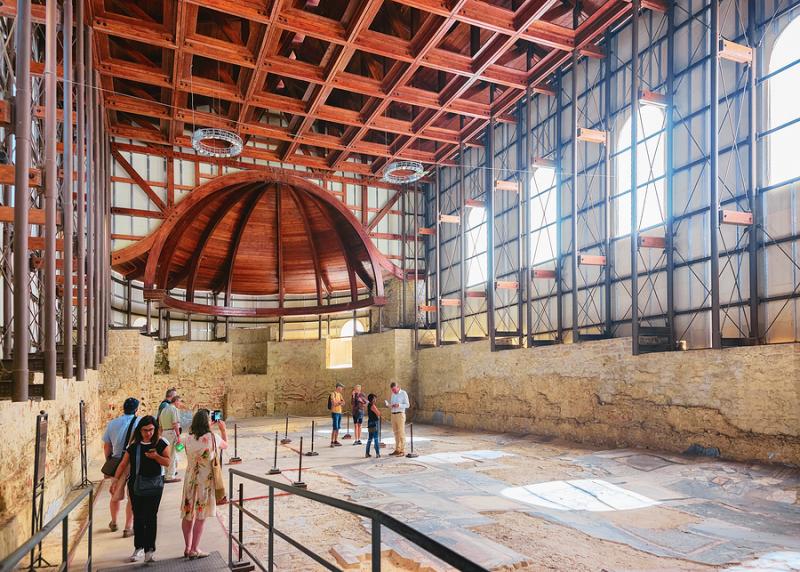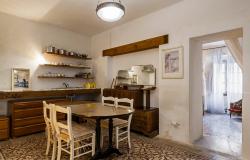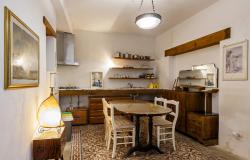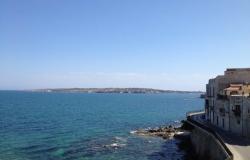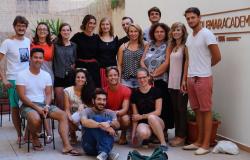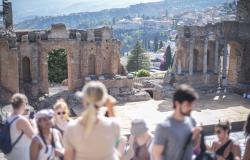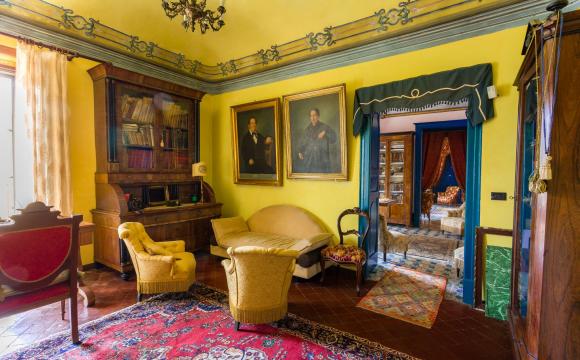It is easy to overdose on fine art in Italy, just because there is so much of it. Italian art history is so rich, and the temptation is always to try to see as much of it as you possibly can, but as is usual with any form of overindulgence there is a danger of overdosing on beauty.
In fact, trying to stuff your visit to Italy with too much Renaissance art can result in Stendhal Syndrome, a mental illness first seen in Tuscany also known as Florence syndrome and Hyperkulturemia. The symptoms include rapid heartbeat, dizziness, fainting, confusion and even hallucinations. All because an individual is exposed to too much art and beauty.
This strange kind of emotional ecstasy can overcome you when you find yourself in front of a series of Michelangelo’s, Bottichelli’s or Donatello’s. After visiting several museums all in one day, you will be exhausted and will never really be able to take it all in, as all the artworks will begin to blur into one another. An overexposure of beauty will inevitably overwhelm the senses.
The condition was named after the nineteenth-century French author of the same name, who documented his own personal emotional state after visiting Florence’s Santa Croce Cathedral. It was much later in 1979 when Italian psychiatrist Dr Grazielle Magherini coined the phrase while remembering Stendhal’s accounts as she was documenting some one hundred cases of patients admitted to the psychiatric ward at Florence’s Santa Maria Nuova Hospital.
Other famous sufferers include Russian novelist Dostoevsky and Marcel Proust. While psychologists Sigmund Freud and Carl Jung both wrote similar accounts about the art related illness.
The best way to avoid becoming overwhelmed by the sheer volume of the beauty of art and history, especially in Sicily where art seems to grow ever more elaborate, is to space out your museum visits. Or limit yourself to only a handful of artworks associated with a specific period of history, place or artist which can readily be appreciated during your stay. It’s like following a healthy diet, by taking small bitesize pieces rather than trying to bite off too much than you could possibly ever chew.
A visit to Sicily, for example, should be divided between outdoor activities like soaking up the sunshine in a piazza, exploring local markets, doing walking tours around the historic centres, visiting churches and palazzi, tasting local wine, cuisine and street food, while liberally sprinkling a few evocative artworks symbolic of the Sicilian aesthetic.
 [Siracusa, Sicily]
[Siracusa, Sicily]
You can easily create your own Southern Italy grand tour in the tradition of the British Romantics who mixed full immersion into the local culture with careful planning which will assure your own mental health and avoid physical exhaustion.
Sicily is filled with literally thousands of museums, churches and palaces which make the prospect of planning even a short visit, overwhelming at the least. Yet there are ways you can create a thematic list based on a specific Sicilian artist, historical period or element of culture. Here are some suggestions on what to focus on.
This is part one in a two part series...
1) Antonello da Messina
This amazing Renaissance artist from Sicily was one of the first to experiment with oil paints in the fifteenth century and is said to have inspired Jan van Eyck, the Flemish master who later further developed the technique which produced amazingly vibrant images with oil and egg tempera. Five centuries later, the Austrian painter Ernst Fuchs, founder of the Vienna School of Fantastic Realism, used the lost method to create what is now a modern way of creating art.
While many of Antonello da Messina’s paintings are dispersed in art galleries throughout Europe, a handful have remained in Sicily and should be hunted down as they represent one of the most well-known masters and innovators in Italian art history.
At Palermo in the Galleria Regionale di Sicilia located in the Palazzo Abatellis, you will find his Annunciation and the elaborate Altarpiece of the Doctors of the Church featuring San Girolamo, Sant’Agostino and San Gregorio Magno.
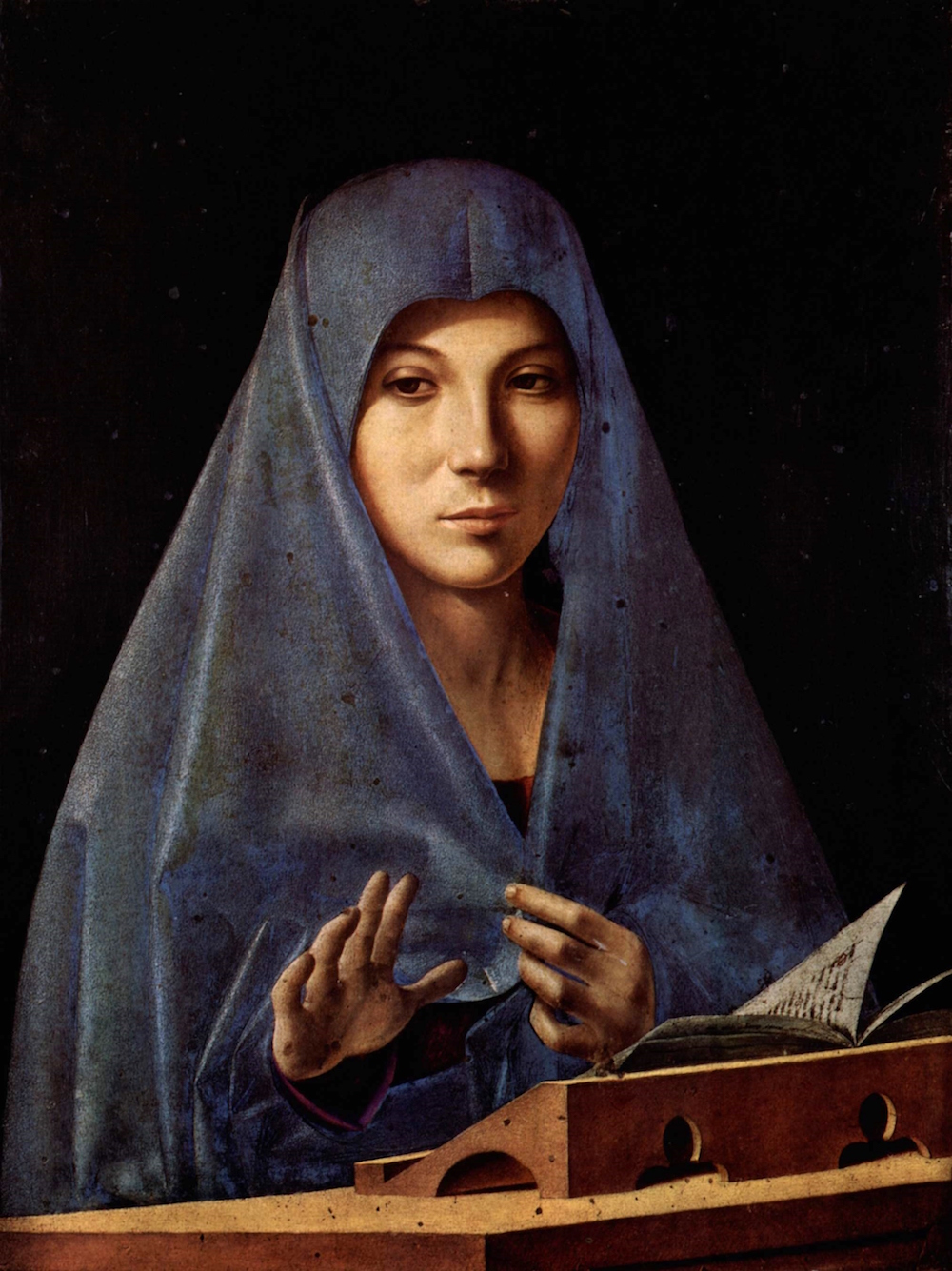 [By Antonello da Messina - The Yorck Project, wikimedia commons]
[By Antonello da Messina - The Yorck Project, wikimedia commons]
While at Cefalu’ in the tiny Museo Mandralisca which includes an eclectic private collection of everything from ceramics to fossils and obscure paintings acquired by the Baron of Mandralisca. It is a bit of a mystery as to how the Baron came to purchase such an important piece of art, but the portrait of the Unknown Mariner is considered to be a male, Sicilian, Mona Lisa with a similar enigmatic smile.
And at Messina, the birthplace of Antonello’s family some of his minor works take up pride of place in the Museo Interdisciplinary di Messina. These include some significant religious based artworks like the Madonna col Bambino, Cristo in Pieta’, A Benedictine and Franciscan Benedicente in Adoration, Ecco homo and the damaged yet evocative Polittico di S. Gregorio.
2) Renato Guttuso
One of the most famous and symbolic artists of mid-twentieth-century Sicily has to be Renato Guttuso who produced many images dedicated to daily life in his native Palermo, a series of self-portraits, pictures of his own inner circle, experimental abstracts and evocative landscapes. His style is wonderfully expressive, filled with colour, energy, passion and at times a controversy which makes his art, a must see in Sicily.
Guttuso’s most enigmatic painting which depicts Palermo’s historic Ballero markets at its peak is symbolic of the energy of Sicily’s traditions. It was also quite controversial in its time as it placed Guttuso’s lover at its centre. La Vucciria is housed in the Palazzo Chiaramonte-Steri one of the most fascinating historical palaces in Sicily in the centre of Palermo. As well as housing a collection of contemporary art it was also used as a prison during the period of the Spanish Inquisition in Sicily and in the old prison cells, you can see elaborate graffiti created by its inmates between 1601 and 1782.
 [Renato Guttuso, Vucciria]
[Renato Guttuso, Vucciria]
Renato Guttuso’s birthplace at Bagheria, literally the first train stop after Palermo heading towards Messina on the North coast of Sicily hosts the Museo Guttuso which houses a selection of his works donated by the artist to his hometown together with many other famous twentieth-century artists from Sicily. The suggestive Villa Catholica home to the museum presents regular art exhibitions for new artists, classical music and literary events.
Also at Palermo in the heart of the old city centre and a few hundred meters away from Piazza Pretoria near the regional gallery at Palazzo Abatellis is the Museo di Arte Contemporanea. The Galleria di Arte Moderna (GAM) is in the church and convent of Sant’Anna on a square of the same name. The museum’s collection spans from the early 1800s to the mid-1900s and illustrates the careers of artists like Giuseppe Sciuti, Francesco Lojacono, Franz von Stuck, Giovanni Boldini, Mario Rutelli, Renato Guttuso, Antonino Leto, Ettore De Maria Bergler, Mario Sironi, Felice Casorati and Massimo Campigli.
While a visit to the Teatro Vittorio Emanuele II at the centre of Messina will reveal a surprising fresco design inside the theatre of Guttuso’s interpretation of the ancient fisherman myth of Cola Pesce who was able to dive underwater as he was half fish. The acutely malnourished Cola Pesce is diving down under Sicily while being observed by very wild, voluptuous and beautiful mermaids.
3) The Charioteer
Probably the most fascinating part of Sicilian art history has to be the many ancient Roman and Greek artworks recovered from temples and the sea floor. Sicily was an essential part of the Roman empire and also an old Greek colony, and so the entire island is littered with many well preserved archaeological sites. Outside of Greece, Sicily is the best place to see well preserved ancient Greek ruins.
One of the most fascinating relics from the Classical period in Sicily has to be the Monza Charioteer, a marble statue recovered in 1979 from the island of Moyta (Monza) a Phoenician settlement near Marsala and housed in the Museo Giuseppe Whitaker on the same island.
 [Photo by Yair-haklai from Wikimedia Commons]
[Photo by Yair-haklai from Wikimedia Commons]
Greek colonies settled and inhabited the western coast of Sicily from as early as the late eighth century B.C. Between the battles and conflicts among ruling families and city-states, Mozia, like many other settlements fell victim to war, revenge and looting. It is believed this sculpture dates from the fifth century B.C, although many questions remain about its origins.
The statue was discovered by accident. While excavating under a mound of dirt and rubble, a worker accidentally picked on the statue’s knee.
Considered to be the most beautiful surviving example of early Greek sculpture the Mozia Charioteer demonstrates the virtuosity and technical skill of carving in ancient Sicily. Standing almost six feet tall (1,8 meters). And even with missing limbs, feet and a damaged profile, the statue is positively majestic.
The details in the marble work are incredible, he wears a long Greek tunic, with ample folds girdled high on his chest with a broad horizontal sash with two holes where an ornament used to be attached. One can also see pierced holes around the ears. It is believed that a head covering of some sort also would have been assigned. His triumphant pose, with one hand resting on a hip and his athletic physique, suggests he may have been the depiction of a victorious athlete. And is only one example of how rich Sicily’s ancient history really is.
4) The Dancing Satyr
This partially recovered Greek bronze statue was accidentally fished out of the Canale di Sicilia by a local fisherman in March 1998, who had also recovered the left leg of the same figure one year earlier. The epic-sized Dancing Satyr of Mazara del Vallo is an object filled with grace and refinement.

Though the satyr is missing both arms, one leg and its separately cast tail, its head and torso are remarkably well-preserved despite millennia spent at the bottom of the sea. The satyr is depicted in mid-leap, head thrown back with pointy ears and back arched, his hair swinging with the movement of his head. The face is highly detailed, and the whites of his eyes are made of inlays in white alabaster marble.
The energy of the satyr’s dance suggests he could have been a depiction of a worshiper participating in the mythological festivities and rites dedicated to the god Dionysius, who were said to dance like madmen while being under the effect of a magical elixir.
This precious piece of ancient art is genuinely astounding and reflects a dedication to artistry which is challenging to believe existed in the classical period.
This extraordinary bronze together with the Riace Bronzes, discovered in the Strait of Messina and housed in Reggio Calabria represent the immense richness of Maritime history in Sicily and reflects the importance of the Mediterranean throughout human history.
Like this article? Don't miss "29 Things to See and Do in Palermo."
5) Flemish Tapestries
The Museo degli Arazzi Fiamminghi (Flemish Tapestries museum) is one of the most amazing museums to discover in Sicily.
It was the Bishop of Messina Antonio Lombardo who donated the precious tapestries to his hometown of Marsala in 1589, where they have been housed ever since under the care of the Bishops of Mazara.
For nearly four centuries the eight intricate tapestries were kept without being displayed, in the nineteenth century a parish priest tried to sell them but thankfully he was unsuccessful. And in 1984 due to the dedication of a local priest, Andrea Linares the tapestries finally found a home in a small museum on via Garraffa near the main church at Marsala.
The series of tapestries represent detail battle scenes from the first Jewish Roman War in the eleventh century. Also known as the Great Revolt it was the first of three major rebellions by the Jews against the Roman Empire, fought in the Holy land against the Roman Emperor Nero. The Roman army was under the command of the great general Vespasiano who together with his son Tito proceeded to quash the rebellion.
 [arazzi di marsala, photo by Museo degli Arazzi di Marsala]
[arazzi di marsala, photo by Museo degli Arazzi di Marsala]
After a series of restorations completed in Florence in 1965 and 1979, it was confirmed that the Flemish artist Peeter Kempeneer, better known as Pietro Campana was the creator of the depictions on the banners. While the weave was by the Cornelis Tons weavers at Brussels, one of the most famous and active tapestry creators in Flanders, northern Belgium, in the second half of the sixteenth century.
These rare series of eight tapestries made from wool and silk are without doubt precious artefacts of this ancient art form. The colours, vitality of expression and the perfect sense of perspective makes them magnificent works of art.
Looking directly at them you are presented with impressive figures, with apparent influences from Michelangelo, while the details in the landscape follow the traditional Flemish school style. Every tapestry is framed with a productive and ornamental frame with mythological figures and fruit and floral motifs.
6) Piazza Armerina and Syracuse
Another wonderfully accidental discovery has to be the Villa Casale, outside the central Sicilian province of Piazza Armerina. To think the elaborate late Roman Villa was covered under a landslide which was a part of an ordinary farm. One day as the owner was literally ploughing his field he uncovered the remains of one of the most significant and most well-preserved series of mosaics in the world.
The Villa Romana del Casale is a large and elaborate Roman villa about three kilometres from Piazza Armerina.
Excavations have revealed it to be one of the richest, largest, and varied collections of Roman mosaics in the world, for this reason, the site is a UNESCO World Heritage Site. The villa and artwork contained within date to the early fourth century AD. The mosaic and opus sectile floors cover some three thousand five hundred square metres and are almost unique in their excellent state of preservation due to the landslide and floods that covered the remains for so many years.

While the Villa Romana del Tellaro is a Roman villa dating from the late Roman Empire and is located south of Noto in the province of Syracuse. The remains of the villa were found in 1971 in a fertile agricultural area, near the Tellaro river. The original building was destroyed in a fire, yet the decorated mosaic floors still remain. Some of the more intricate mosaics depict ancient Greek myths, which date back to the fourth century. One of the more complete levels shows hunting scenes and African animals.
Because of its more recent discovery, the villa is less well known (and less crowded) than the mosaics at the villa of Piazza Armerina.
7) Stucco sculptures
Giacomo Serpotta (1652 – 1732) was an Italian sculptor who worked mainly in stucco a plaster for interior wall ornamentation usually made from cement, sand and lime, moulded while still wet.
Serpotta was born and died in Palermo, and may have never left Sicily. His skill and facility with stucco sculpture appear to have arisen without mentorship or direct exposure to the mainstream of Italian Baroque which is a fantastic prospect as he developed the immensely decorative Sicilian Rococo style which can only be found on the island.
The Oratory of Saint Lawrence at Palermo contains some fantastic examples of his art. The Oratorio di San Lorenzo is located near the Basilica of Saint Francis of Assisi, in the Kalsa neighbourhood which is one of the oldest and most suggestive parts Palermo.
The building was given to the Conventual Franciscans to spread the cult of Saint Francis and Lawrence. In 1699 Giacomo Serpotta completely covered its interior in some of his most sumptuous stucco decorations.
Also at Palermo, the St. Cita's Oratory began its life as a standard rectangular room which was designated a liturgical and meeting space. Serpotta transformed it into an immensely beautiful area. The side walls are made up of a beautiful loop, composed of putti, allegorical statues and theatres that illustrate the Sorrowful, Joyful and Glorious mysteries of the Rosary.
The pivotal episode of the oratorio, performance is at the centre of the apse, with the historic Battle of Lepanto in which a Christian fleet, protected by Our Lady of the Rosary, wins against the Turks. The Oratory was decorated by Serpotta over a year in 1717 and is a mixture of art and theatrics.
8) The Triumph of Death
One of the most epic and unique works of art of all times is the Triumph of Death an allegorical mural which has both enthraled and shocked people ever since its creation in the fifteenth century. The artist of the mysterious artwork is unknown and little is known about when it was created, it still is one of the most excellent reminders of the fragility of human pride and inevitable mortality.
The Trionfo Della Morte di Palermo’s story begins nearly six hundred years ago, in the Spanish domination in Sicily under King Alfonso V of Aragon. These were the years of the Black Plague, an apocalyptical illness which decimated Europe. It was a dramatic time in history, which changed peoples perception of death and created a new emotive way of expression and iconography which became known as the Gothic school.
The alfresco was commissioned by Conte Matteo Sclafani and was realised in the courtyard of the Palazzo Sclafani in 1330. Thirty years later after the death of its owner, it was donated to the new public hospital of Palermo.
The artwork represents the various steps of man’s afterlife according to Christian iconography from Death, Eternal Judgement before god to Hell and Heaven, strangely enough, it’s presence in the hospital was seen as giving comfort to the sick, dying and infirm.
 [By unknown master (Maestro del Trionfo della Morte) via wikimedia commons]
[By unknown master (Maestro del Trionfo della Morte) via wikimedia commons]
Today the alfresco has a permanent home in the Regional Museum at Palazzo Abatellis in Palermo, where it has been lovingly cared for and restored over the years.
The Triumph of Death is an encyclopedia of medieval allegory which represents every element of life and death from beauty, old age, wealth and poverty, sadness, bitterness, wonder, compassion, to love and hope.
The scene of the masterpiece is like a luxurious garden, whose peace is interrupted by death as if it was out hunting spearing people with a deadly arrow. The dark skeletal woman at the centre of the frame is on horseback in a surreal apocalyptic vision.
At the base of the frame, there are the bodies of those who have already been struck down, the victims are from all walks of life from local authorities, kings, popes, bishops and religious brothers. To the right, there are the young aristocrats, dames and knights, but also musicians, poets, writers. The message is apparent, death comes to everyone, it is the ultimate leveller of humanity, we all have the same destiny.
Then on the left, there are the final ones the poor, the old, the infirm, who almost seem to welcome death as a way of relieving their suffering. The emotive nature of the allegory is what makes it so powerful, each figure seems to have its own story, everyone is telling us about themselves.
The mystery of the artist who created this amazingly great fresco is just as fascinating as the work itself. Some say it is a work from the French artist Guillaume Spicre or the revered Spanish painter Peris Gonzalo. Or even still the English maestro Barthélemy who legend has it was cured of the black plague at Palermo and realised the artwork in thanks. Others suggest it could be the hand of a very young Antonello da Messina
Either way, this artist has created a fantastic depiction of the eternal war between good and evil, a beautiful allegory of the defeat of humanity before death, which at the time of its creation must have been genuinely terrifying and powerful to witness.
Stay tuned for part two of unmissable art in Sicily...
